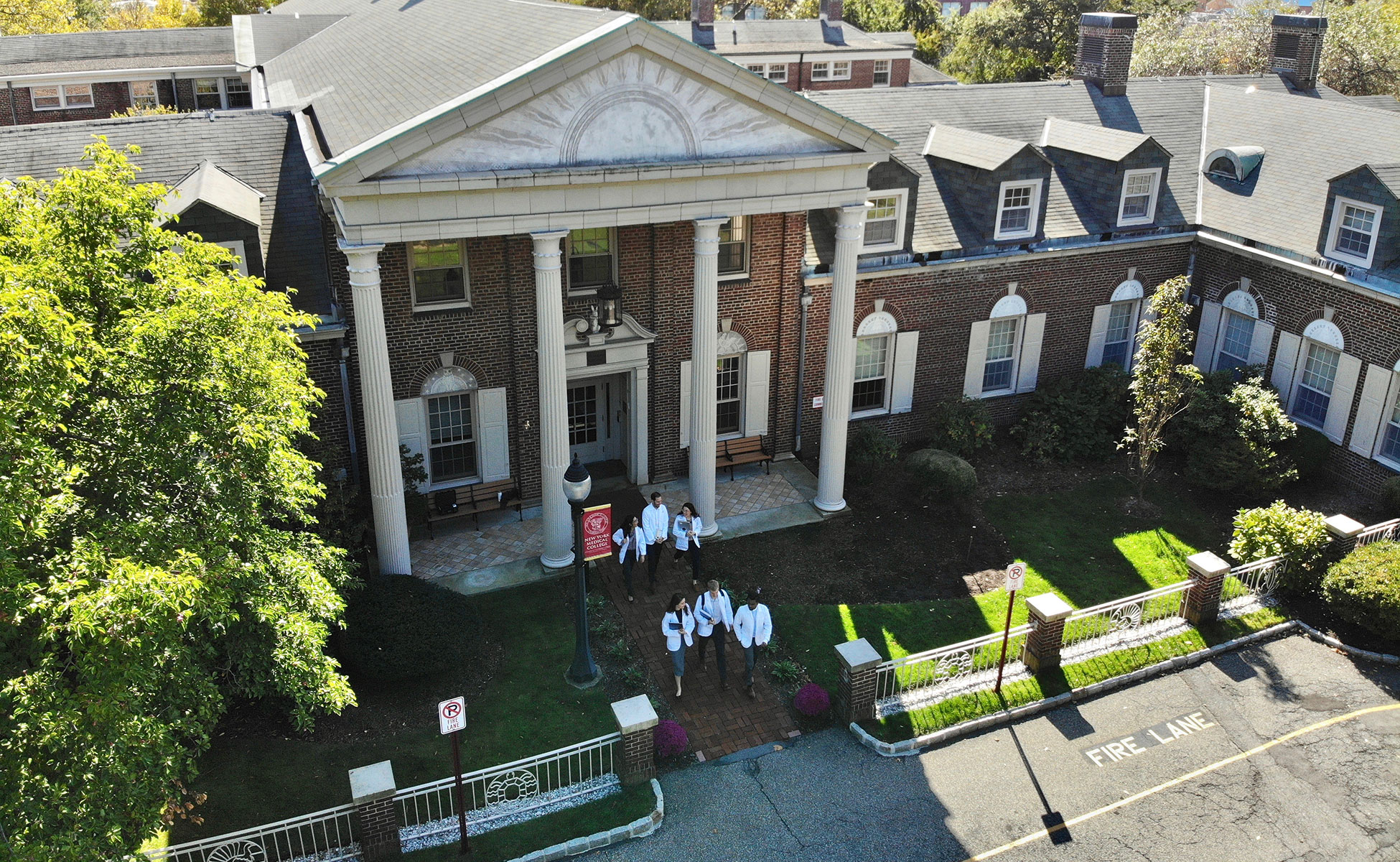Since 1860, New York Medical College (NYMC) has trained generations of students to deliver skilled and compassionate medical care. Rooted in this 157-year history is a legacy of inclusion and diversity. NYMC has always championed women and minority students, graduating many notable “firsts,” including the first woman to practice medicine in Canada and the first female African American physician in New York State. Many more NYMC faculty and alumni have made significant and lasting contributions to the field of medical education, the practice of clinical medicine, and the improvement of communities they have served.
Geraldine Burton Branch, M.D., Class of 1936
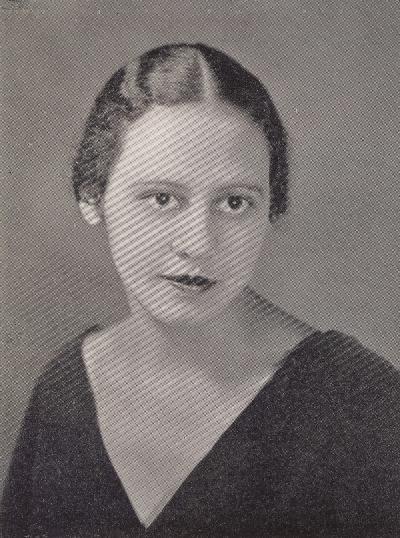
Distinguished physician, educator and public health professional
Early recipient of the Walter Gray Crump Sr., M.D., Scholarship for Minority Medical Students
Hometown: New York, New York
Born: October 20, 1908
Died: July 22, 2016
Geraldine Burton Branch, M.D., was an African American obstetrician gynecologist. She received her M.D. from New York Medical College in 1936 and was an early recipient of the Walter Gray Crump Sr., M.D. Scholarship, created in 1928 specifically to support minority medical students. She received her B.S. from Hunter College in Chemistry and Physics in 1932, and an M.P.H from the University of California, Los Angeles in 1962.
From 1941 to 2001, Dr. Branch worked in New York and California as an ob/gyn, family planning clinician, medical examiner, district health officer, medical director, faculty member and consultant in obstetrics, gynecology, public health and preventive medicine. Following the Watts riots in Los Angeles in 1965, she was instrumental in the founding of the Watts Health Center and active with the Watts Health Foundation.
Dr. Branch later moved to California. After attending a New York Medical College alumni gathering in Los Angeles, Dr. Branch was inspired to continue the legacy of supporting minority students by funding a four-year scholarship through New York Medical College’s Adopt-a-Scholar program to support diverse students.
Dr. Branch passed away on July 22, 2016. She lived to be 107 years old.
Walter Gray Crump, M.D., Class of 1895
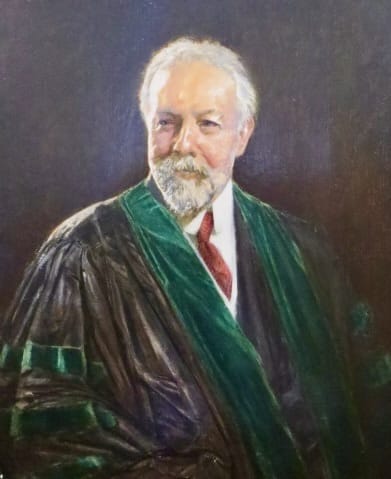
Established first scholarship for African American medical students and female medical students in the United States, 1928.
Born: 1869
Died: 1945
Walter Gray Crump graduated from the College in 1895 and went on to become professor of surgery at the College and Flower Hospital. Gray created the first scholarship aimed exclusively at supporting African American medical students at New York Medical College, the first in the nation at a white majority medical school. Many notable African American physicians benefitted from the scholarship. In recognition of his dedication and visionary contributions to the College, he was later awarded the rank of emeritus professor.
Dr. Crump served as the chief surgeon at Broad Street Hospital in New York City, a hospital he helped co-found. He was a fellow and later a governor of the American College of Surgeons, and a member of the Homeopathic Medical Societies of the State and County of New York.
Throughout his career, Dr. Crump championed civil rights, serving as a trustee at Howard University and Tuskegee Institute. Tuskegee was first founded to educate African American clergymen and later expanded into a university for liberal arts and medicine.
Rita F. Girolamo, M.D., Class of 1951
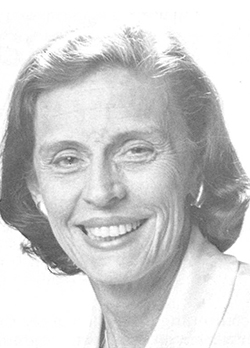
Hometown: Detroit, Michigan
Born: August 14, 1936
Died: January 16, 2017
Born in New York City, Rita Frances Girolamo, M.D. ’51, served as professor of radiology and vice chair of the Department of Radiology, director of nuclear medicine and associate dean for student affairs at New York Medical College (NYMC) and chief of radiology services at Metropolitan Hospital Center.
After graduating cum laude in 1947 with a B.A. from Barnard College, Dr. Girolamo enrolled at New York Medical College Flower and Fifth Avenue Hospitals in New York City and graduated with an M.D. degree in 1951—one of only sixteen women in the Class. Dr. Girolamo’s postgraduate training included an internship at St. Vincent's Hospital in New York from 1951-52, followed by a three-year residency at Flower and Fifth Avenue Hospitals. She was awarded a National Institutes of Health (NIH) cancer fellowship for 1954-55, and pursued additional nuclear medicine training at Oak Ridge National Laboratory in Tennessee.
In 1956, Dr. Girolamo was appointed to the NYMC faculty and earned the rank of full professor in 1966. In 1967, when the affiliation contract between the College and Metropolitan Hospital Center was signed, formalizing the century-long association of the two institutions, she was named chief of radiology services at Metropolitan and became the first woman president of the Medical Board at Metropolitan. A board-certified radiologist, Dr. Girolamo’s was awarded one of eight national teaching grants to train radiologists and technologists in mammography and thermography. Under her direction, the College was one of the first two centers in the U.S. to use diaphanography (transillumination), a technique for diagnosis of breast disease.
In 1981, Dr. Girolamo became the associate dean for student affairs at NYMC. Her students and residents affectionately called her “Dr. G.” Dr. Girolamo’s involvement with student affairs began during her medical school years when, as a fourth-year student, she helped to organize the Women's Medical Fraternity, of which she was president. She was also elected to the Cantin Society, the student honor organization.
From 1985-1987, Dr. Girolamo served as president of the New York Medical College School of Medicine Alumni Association during the College’s 125th anniversary. At the conclusion of her term, she received the Alumni Association Medal of Honor. That same year, Dr. Girolamo was honored at the 128th Commencement with the College’s highest award, the Distinguished Service Medal, for her untiring commitment to the education of future generations of physicians.
After 40 years, she retired from the faculty in 1996, and was named professor emeritus of radiology.
Dr. Girolamo passed away on September 8, 2007, at the age of 80. Dr. Girolamo and her husband, Armand F. Leone, M.D., '47, who was also a radiologist, lived in Franklin Lakes, N.J., for 45 years. They had three sons, radiologist Armand F. Leone Jr., M.D. ’82, Peter Leone and Mark Leone. Her legacy will long be remembered through the Rita F. Girolamo, M.D. ’51, Award, given annually to a graduating medical student who has shown the most proficiency in the specialty of radiology.
Phyllis Harrison-Ross, M.D.
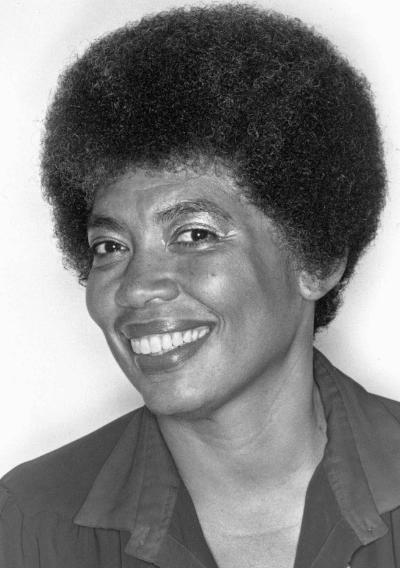
Community mental health pioneer and New York Medical College professor emeritus Professor of Psychiatry and Behavioral Sciences
Phyllis Harrison-Ross, M.D.
School of Medicine
Hometown: Detroit, Michigan
Born: August 14, 1936
Died: January 16, 2017
Trained as a psychiatrist as well as a pediatrician, Phyllis Harrison-Ross, M.D., professor emeritus, served on the faculty of the New York Medical College School of Medicine Department of Psychiatry and Behavioral Sciences for more than 25 years.
Widely regarded as a pioneer in the community mental health profession, Dr. Harrison-Ross had a remarkably diverse career as a hospital clinical administrator, researcher, academician, public health consultant, forensic and child psychiatrist and public educator. She focused her administrative and clinical talents on serving diverse, hard-to-reach, and underserved populations, including the incarcerated.
As director and chief of service, Department of Psychiatry and the Comprehensive Community Mental Health Center at Metropolitan Hospital Center in New York City, Dr. Harrison-Ross led a multidisciplinary staff of 600 (including 100 physicians), and oversaw adolescent and child in-patient and out-patient services, day treatment programs, community outreach, mobile crisis and emergency services, and drug and alcoholism counseling. The hospital’s mental health center served an estimated one million patients each year during her tenure.
Dr. Harrison-Ross was one of the early pioneers of telepsychiatry, and considered the technology “revolutionary” for African Americans living in areas where no or few African American psychiatrists practiced. She also used telepsychiatry with hard-to-reach populations such as inmates, and armed services personnel stationed in remote locations.
Dr. Harrison-Ross’s development of a curriculum and an Academy of Issues in Psychiatry for Black Populations, initially created for use with her students at NYMC, went on to be used in APA medical education workshops. She authored several books, including Getting it Together, a psychology high school textbook, and The Black Child: A Parent’s Guide; and served as a moderator of the television show, All About Parents.
She received the APA Solomon Carter Fuller Award for distinguished service to improve the lives of African American people in 2004.
Phyllis Anne Harrison, M.D., passed away on January 16, 2017, at the age of 80.
Israel S. Kleiner, Ph.D.
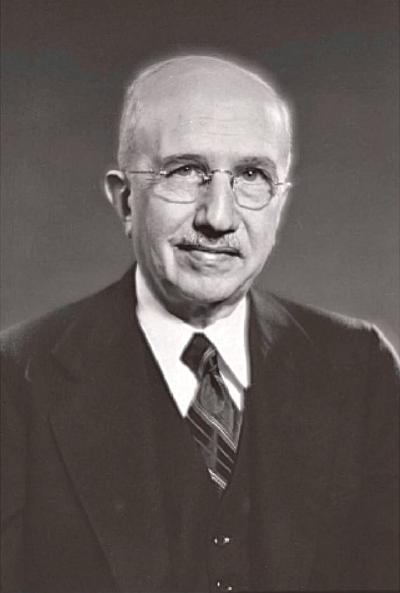
Israel Simon Kleiner, Ph.D., served as acting dean of New York Medical College (NYMC) from 1921-1922 and dean from 1922-1925.
Hometown: New Haven, Connecticut
Died: June 15, 1966
Born in New Haven, Conn., Dr. Kleiner graduated from Yale University with a Ph.B. (1906) and Ph.D. (1909) in physiological chemistry. He is credited as being the first to demonstrate the effect of extracts from the pancreas causing hypoglycemia which eventually helped lead to the discovery of insulin.
Dr. Kleiner came to NYMC in 1919 as a professor of physiological chemistry. After retiring from the deanship in 1925, he continued to serve on the faculty and in 1948 he became the director of the Department of Physiological Chemistry. Dr. Kleiner co-authored highly regarded textbooks such as Human Biochemistry (with James M. Orten) and Laboratory Instructions in Biochemistry (with Louis B. Dotti). Prior to joining NYMC, Dr. Kleiner worked at the Rockefeller Institute and served on the faculty of Tulane University.
He was the 1959 recipient of the Van Skye Award in Clinical Chemistry from the New York Academy of Sciences.
Dr. Kleiner passed away in New York City on June 15, 1966, at 81 years old.
Alonzo Potter Burgess Holly, M.D., Class of 1888
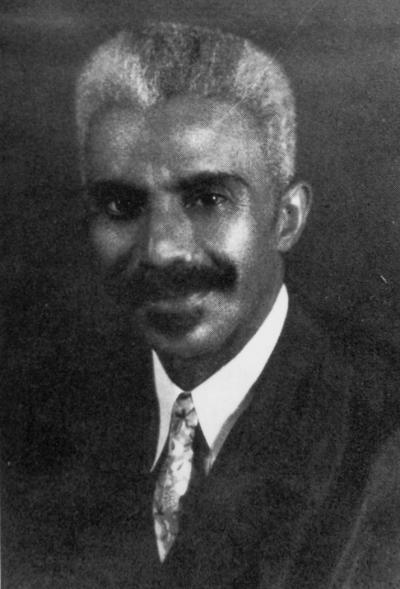
First graduate of New York Medical College of African descent.
Haitian consul to the Bahamas.
Hometown: Port-au-Prince, Haiti
Born: September 21, 1865
Died: November 28, 1943
Alonzo Potter Burgess Holley, M.D., was the first graduate of New York Medical College of African descent to graduate from New York Medical College, completing the program in 1888. He attended Cambridge University as an undergraduate. After graduation from New York Medical College, Dr. Potter Burgess Holley was appointed by the Haitian government as a consul to the Bahamas, where he remained for twelve years. He also served as the Episcopal Bishop of Haiti, the second African American to attain the rank after his father.
Dr. Potter Burgess Holley served as President of the Florida State Medical, Dental and Pharmaceutical Association and was a member of the National Medical Association.
He authored two books: The problems of our race: Our Duties and Responsibilities and God and the Negro, Synopsis of God and the Negro; or the Biblical Record of the Race of Ham.
Clarence Sumner Janifer Sr., M.D., Class of 1915
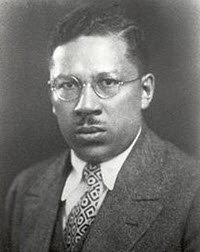
First African American member of the Medical Society of New Jersey, and distinguished physician and public health advocate for the underprivileged African American community of the City of Newark.
Hometown: Newark, New Jersey
Born: March 13, 1886
Died: November 14, 1950
Clarence Sumner Janifer Sr., M.D. 1915, was a groundbreaking African American physician who was the first African American member of the Medical Society of New Jersey in 1916. After graduating from the New York Homeopathic Medical College and Flower Hospital (the College’s name at the time) in 1915 amidst the backdrop of World War I, he volunteered for service in the Medical Reserve Corps in 1917.
As one of the first troops to arrive in France following the declaration of war, Dr. Janifer became an expert in amputations, and in December 1918, received the Croix de Guerre for providing first-hand relief to the wounded.
Upon returning from the war, he worked for the Newark Health Department, serving in extremely economically disadvantaged, segregated neighborhoods where he was charged with running a Well Baby Clinic for African Americans.
Driven by his dream to combat the high mortality rate of African American children, Dr. Janifer (who went on to earn two master's degrees in public health), was frequently published in the Journal of the National Medical Association on topics corresponding to his experiences in the Well Baby Clinic. His intent was to educate African American mothers and caregivers on the importance of child hygiene and nutrition.
In 1946, he became the second African American physician invited to join the Newark City Hospital as a member of the pediatrics department. In 1948, Dr. Janifer was one of the 42 distinguished citizens honored in the Hall of Fame of the New Jersey Herald Times.
Marcus David Kogel, M.D., Class of 1927
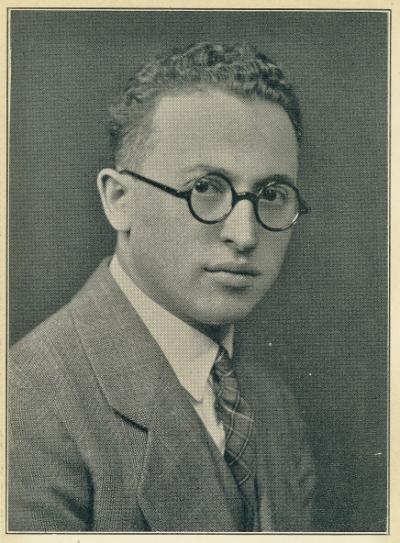
Founding dean, Albert Einstein College of Medicine
Hometown: Austria
Born: September 28, 1903
Died: November 28, 1989
Marcus David Kogel, M.D. 1927, was founding dean of the Albert Einstein College of Medicine at Yeshiva University. He received his M.D. from New York Medical College in 1927. He served as a chief resident at Metropolitan Hospital in Manhattan from 1927 to 1929.
During World War II, he served as a colonel in the Army, first as director of the department of military sanitation at the Medical Field Service School in Carlisle, Pennsylvania, and later as medical inspector and chief of preventive medicine in China, where he was awarded the Legion of Merit for his efforts in combating a cholera epidemic.
Dr. Kogel was New York City Commissioner of Hospitals from 1949-1953. He was named the founding dean of Albert Einstein College of Medicine in 1955 and held the post until 1967. At the time, Albert Einstein College of Medicine was the first medical school to be built in New York City since the turn of the 20th century.
While at Einstein, Dr. Kogel also established the Department of Preventive and Environmental Medicine and served as its chairman from 1954 to 1960. He also served as dean of the Sue Golding Graduate Division of Medical Sciences and was later named vice president for medical affairs and science at Yeshiva University, serving on its Executive Council and the Academic Council of the graduate schools.
Myra Adele Logan, M.D., Class of 1933, FACS
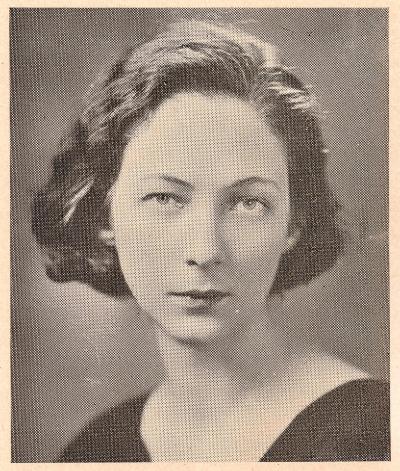
First woman to perform open heart surgery and one of the first African American woman elected a fellow to the American College of Surgeons
Hometown: Tuskegee, Alabama
Born: 1908
Died: January 13, 1977
Myra Adele Logan, M.D., graduated from New York Medical College with an M.D. in 1933. She was the inaugural recipient of the Walter Gray Crump Sr., M.D., Scholarship, created in 1928 specifically to support minority medical students.
After graduation, Dr. Logan became an associate surgeon at Harlem Hospital, where she spent the majority of her medical career. She was also a visiting surgeon at Sydenham Hospital and maintained a private practice.
In 1943, she became the first woman to perform open heart surgery in the ninth operation of its kind performed anywhere in the world. She was also one of the first African American woman elected a fellow of the American College of Surgeons. Dr. Logan’s other achievements include development of antibiotics, including Aureomycin; work on early detection and treatment of breast cancer; and efforts to develop an x-ray processes to more accurately detect differences in tissue density, allowing tumors to be discovered earlier.
Dr. Logan was a founding partner and treasurer of the Upper Manhattan Medical Group of the Health Insurance Plan (HIP), one of the first group practices in the United States. She also worked with the NAACP's Health Committee, the New York State Fair Employment Practices Committee, the National Cancer Committee and Planned Parenthood. She was a member of the New York State Commission on Discrimination during then New York Governor Thomas E. Dewey's administration. In 1944, she resigned from the commission with seven other members after Dewey shelved antidiscrimination legislation they had drafted.
Dr. Logan was also an accomplished classical pianist. She retired in 1970 and later served on the New York State Workmen's Compensation Board.
She passed away on January 13, 1977, at the age of 68.
John Stuart Marr, M.D., Class of 1967
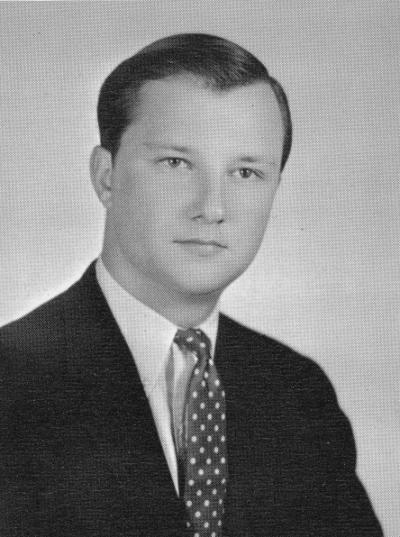
Epidemiologist and accomplished writer of medical fiction
John S. Marr graduated from New York Medical College in 1967 and later earned an M.P.H. degree from the Harvard School of Public Health. He attended Yale University as an undergraduate. After graduating from NYMC, Dr. Marr served at the U.S. Army’s Academy of Health Sciences in San Antonio, Texas, where he taught troops preparing to deploy to the Vietnam War about tropical diseases.
Dr. Marr also served as New York City’s principal epidemiologist where he investigated a number of infectious disease outbreaks, including Legionnaires' disease, typhoid fever, botulism amebiasis and was director of the city’s swine flu response in 1976. He later served as the State Epidemiologist of Virginia. He authored or co-authored more than 55 peer-reviewed journal articles and co-authored A Century in the Life of the Control of Communicable Disease Manual: 1917 to 2017.
Dr. Marr also wrote several books of fiction. In 1998, Marr published The Eleventh Plague with co-author John Baldwin, a medical thriller described by Kirkus Reviews as “gripping” and “creepy.” He has also written many magazine articles, book reviews, and essays on public health issues. Among them are Alexander the Great and West Nile Virus Encephalitis, Was the Huey Cocolitzli a Hemorrhagic Fever?, Marching to Disaster: The Catastrophic Convergence of Inca Imperial Policy, Sandflies, and El Niño in the 1524 Andean Epidemic, A New Hypothesis on the Cause of the 1616-19 Epidemic among the Amerindians of New England, The 1802 Yellow Fever Epidemic in Haiti, Yellow Fever Misadventure of 1942, Yellow Fever, Asia and the East African Slave Trade, and The Elephant War Epidemic in Mecca, 570 A.D. He continues to publish articles on historical epidemics and obscure historical infectious disease outbreaks.
Edwin Sterling Munson, M.D., Class of 1894
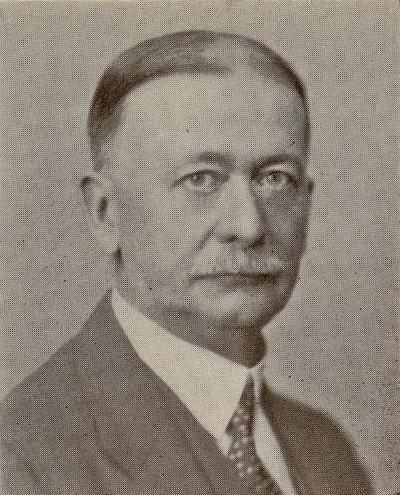
New York Medical College School of Medicine
Professor Emeritus of Ophthalmology, New York Medical College
Born: 1870
Died: 1958
Edwin Sterling Munson, M.D., graduated from New York Medical College in 1894 and went on to teach at the College, serve as Dean of the Flower-Fifth Avenue Hospital (when it was New York Ophthalmic Hospital), and practice ophthalmology at the Laura Franklin Free Hospital for Children. He attended Princeton University as an undergraduate.
After serving an internship at the Five Points House of Industry, a community center serving what was then one of New York most entrenched slums, Dr. Sterling Munson entered medical practice as an assistant, specializing in ophthalmology.
Dr. Munson was a member of the Seventh Regiment National Guard, New York at the outset of the First World War, serving for more than twenty years. He was cited for bravery when he operated a first-aid station under fire in the frontline trenches.
Dr. Munson earned an international reputation, and his name lives on in Munson's sign, a V-shaped indentation of the lower eyelid when the gaze is directed downwards, an indication that is characteristic of advanced keratoconus.
Ira Remsen, M.D., Class of 1865
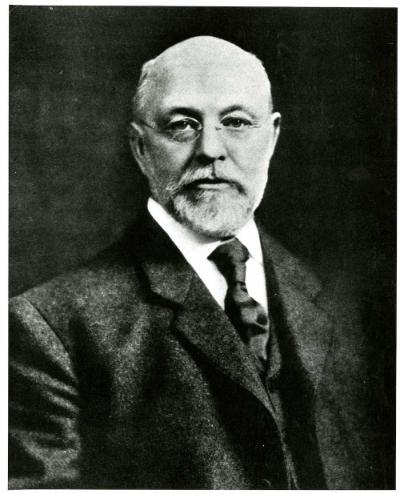
Co-discovered saccharin artificial sweetener; one of five founding faculty at Johns Hopkins University
Born: 1846
Died: 1927
Ira Remsen, M.D. 1865, Ph.D., graduated from the New York Medical College School of Medicine in 1865 and later received a Ph.D. from the University of Göttingen in Sweden. He became a research chemist at the University of Tübingen in Germany before returning to the U.S. and joining the faculty of Williams College in Virginia.
While on the faculty there, Dr. Remsen wrote the popular text, Theoretical Chemistry. He would go on to become one of five founding faculty of Johns Hopkins University in Maryland where he also founded the university’s department of chemistry and its school of engineering. He later served as the university’s president, the second in its history. Working in his laboratory, Dr. Remsen co-discovered the artificial sweetener, saccharin.
He founded the American Chemical Journal which he edited for 35 years. His biography notes his influence on the study of chemistry, stating that “he opened up a life work in chemistry as a career to many, and developed a spirit of research that spread over the country.”
George Watson Roberts, M.D. Class of 1889, Ph.B.
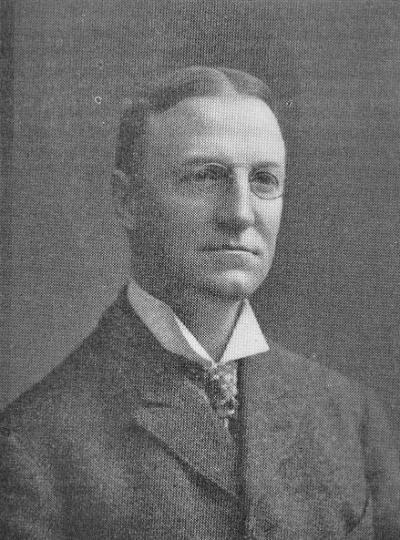
Developed surgical procedure for treatment of colon cancer
George Watson Roberts graduated from New York Medical College in 1889 with an M.D. after earning a Ph.B. from the University of Vermont in 1887. Dr. Roberts went on to become an attending gynecologist at Flower Hospital in New York City while holding similar positions at other area hospitals. He was a professor of gynecology and a professor of surgery at New York Medical College. He also was a member of the American Institute of Homeopathy, and the New York State and New York County Homeopathic Medical societies and a non-resident lecturer on Clinical Surgery at the University of Michigan.
Lawrence B. Slobody, M.D., Class of 1936
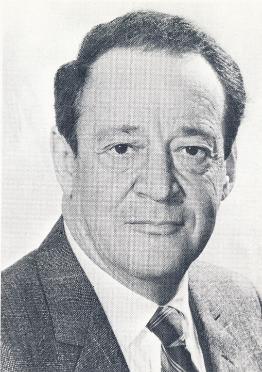
Lawrence Boris Slobody, M.D. '36, served as acting president of New York Medical College from 1971-72, and as president from 1972-1977. He also served as acting dean from 1965 - 1966.
Hometown: New York City
Born: 1911
Died: April 23, 2001
Dr. Slobody was a pediatrician, author and educator. Born in New York City in 1910, he earned a Bachelor of Science in 1930 from New York University and his M.D. from New York Medical College. Dr. Slobody completed his internship and residency at Metropolitan Hospital.
Dr. Slobody was appointed chief of the Frederick S. Wheeler Laboratory for Nutritional Research at the College in 1943 and was instrumental in College researchers developing early tests for Vitamin C and B deficiencies.
Dr. Slobody was professor and chairman of the Department of Pediatrics from 1948 to 1963, was appointed director of the Center for Maternal and Child Health in 1963 and became vice president and acting dean in 1966.
Dr. Slobody was known for his active development of baby products and his work with those who people with intellectual and developmental disabilities. He developed the first multi-disciplined clinic for diagnosis and treatment of the mentally retarded and people with intellectual and developmental disabilities and was the first Gold Medal recipient of the Association for the Help of Mentally Retarded Children. In 1954, he was the youngest physician elected to the American Pediatric Society.
He received the 1950 award from the Association for the Help of Retarded Children for “the physician who has contributed the most to the help of retarded children.” He was the author of the classic Survey of Clinical Pediatrics (1959), and an author of journal articles related to diaper rashes, mental retardation and medical education.
His positions were many: President of the Medical Board of Metropolitan Hospital; Chairman, Section of Pediatrics of the New York Academy of Medicine; Chairman, Pediatric Advisory Committee of the New York City Department of Health; Vice President of the Coordinating Council for Cerebral Palsy; Chairman, Advisory Committee on Mental Retardation of the New York State Interdepartmental Health Resources Board.
In 1996, he published another book, The Golden Years: A 12-Step Anti-Aging Plan for a Longer, Healthier, and Happier Life (Bergin & Garvey). As Acting Dean, Vice President and eventually President of NYMC, he was instrumental in developing the early departments and sections for Geriatrics. Because of Dr. Slobody’s influence, the New York City Department of Hospitals with the help of the College, established the 2,000-bed Bird S. Coler Center specializing in research and care for the aging.
In retirement, he divided time between Amherst, Massachusetts, and Florida and raised horses, and even edited a book devoted to the Currier and Ives lithographs of American trotting horses.
Lawrence B. Slobody, M.D. '36 passed away on April 23, 2001, at the age of 90.
Sheila M. Smythe, M.S.
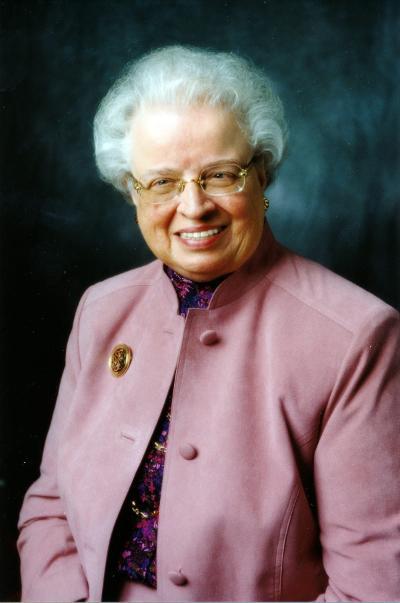
Sheila Mary Smythe, M.S., was dean of the Graduate School of Health Sciences later renamed the School of Public Health (today known as the School of Health Sciences and Practice).
Ms. Smythe was appointed dean of the school in 1990 and became an executive vice president of NYMC in 1995. During her tenure at the College, Ms. Smythe doubled the size of the School and helped establish several new programs, including an M.S. in health informatics and clinical research administration; one of the nation’s few medical model M.S. programs in speech-language pathology; and a professional doctorate in physical therapy. She also helped the School achieve accreditation as a School of Public Health.
Prior to NYMC, Ms. Smythe served as president and chief operating officer of Empire Blue Cross and Blue Shield, where she worked for twenty years. She previously served as chief health policy adviser in the United States General Accounting Office.
Ms. Smythe served on a national committee of educators working in collaboration with the Centers for Disease Control to promote preventive health research, and she was one of 15 public health leaders who served on the Committee on Educating Public Health Professionals for the 21st Century, appointed by the Institute of Medicine. She was president of the Partnership for a Healthy Population, a center for scholarly focus on community health improvement issues in New York’s Hudson Valley.
Emily Howard Jennings Stowe, M.D., Class of 1867
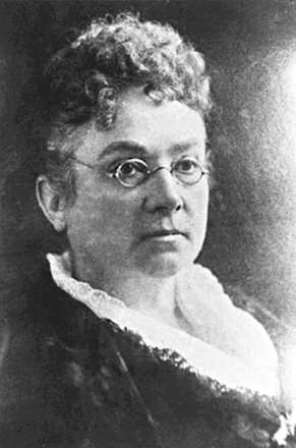
Class of 1867, New York Medical College for Women
First Canadian female to graduate with an M.D.
Hometown: Norwich, Ontario, Canada
Born: May 1, 1831
Died: April 29, 1903
After being denied entrance to medical school in Toronto, Canada, because the school did not admit women, Emily Howard Jennings Stowe, M.D. 1867, left her native Canada to attend New York Medical College for Women. After graduating in 1867, she began a practice in Toronto, the first Canadian woman to practice medicine in Canada.
After her experience fighting for acceptance in the medical community, Dr. Stowe became an ardent champion of women’s rights, including suffrage, education and medical education. In 1877, she helped found the influential Toronto Women’s Literary Guild, a group set up to fight for women’s rights and improved working conditions. The Guild is credited with making higher education at select Canadian institutions available to women.
Later in her career, she spearheaded the creation of Woman’s College Hospital in Toronto, and successfully petitioned medical schools in Canada to reverse its discrimination policy and admit women. Dr. Stowe’s own daughter, Augusta, was the was the first woman in Canada to earn a medical degree from a Canadian medical school.
Dr. Stowe was also tireless in her efforts to secure women’s right to vote, serving as President of Dominion Women’s Enfranchisement Association, an organization instrumental in women’s suffrage in Canada. Despite her lifelong efforts, Canadian women did not earn the right to vote until 1917, twelve years after Dr. Stowe’s death.
On April 12, 2018, Dr. Stowe was among six renowned medical pioneers inducted into Canadian Medical Hall of Fame (CMHF).
Susan Smith McKinney Steward, M.D., Class of 1870
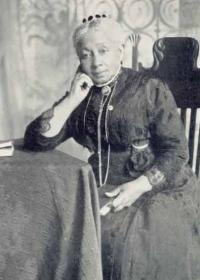
First African-American woman to earn a medical degree in New York state
Hometown: Brooklyn, New York
Born: 1847
Died: March 7, 1918
When Susan Smith McKinney-Steward, M.D., graduated valedictorian from the New York Medical College for Women in 1870, she was the first African-American woman to ever earn a medical degree in New York state, and the third in the United States.
Dr. Smith was of mixed heritage, her father of African descent and her mother was the daughter of a French officer and a Shinnecock woman. Dr. Smith started attending the medical school just a few years after the Emancipation Proclamation. After graduation, Dr. Smith McKinney-Steward practiced medicine in Brooklyn and Manhattan, specializing in prenatal care and childhood diseases. She founded The Women's Hospital and Dispensary in Brooklyn which later became The Memorial Hospital for Women and Children. She was a member of the Kings County and New York State Homeopathic Medical Societies and served as an official physician for the Brooklyn Home for Aged Colored People (now Brooklyn Home for the Aged), one of the early medical institutions in Weeksville, Brooklyn, where Dr. Smith McKinney-Steward was born. She also practiced at New York Medical College and Hospital for Women in Manhattan.
Dr. Smith McKinney-Steward earned medical licenses in Montana and Wyoming after spending several years traveling in these states with her husband, Theophilus Gould Steward, an ordained minister and U.S. Army chaplain. Dr. McKinney-Steward later joined Wilberforce University in Ohio as a resident physician and faculty member teaching health and nutrition.
She was an accomplished public speaker and in 1911 addressed the first Universal Race Congress at the University of London, England, with a presentation “Colored Women in America.” She later gave a speech, “Women in Medicine,” at the National Association of Colored Women’s Clubs Convention. Dr. Smith McKinney-Steward’s was also involved in local missionary work and women’s suffrage advocacy, and was president of the Brooklyn Women’s Christian Temperance Union.
Dr. McKinney-Steward passed away at the age of 71 on March 17, 1918, in Brooklyn. Notable author W.E.B. DuBois gave the eulogy at her funeral, and she was laid to rest in her birth town in the New York City borough of Brooklyn at Green-Wood Cemetery. Junior high school 265 in Brooklyn, Dr. Susan S. McKinney Secondary School of The Arts, is named in her honor. In 1976, black women physicians in New York, New Jersey and Connecticut, named their chapter of the National Medical Association in her honor.
Jane Cooke Wright, M.D., Class of 1945
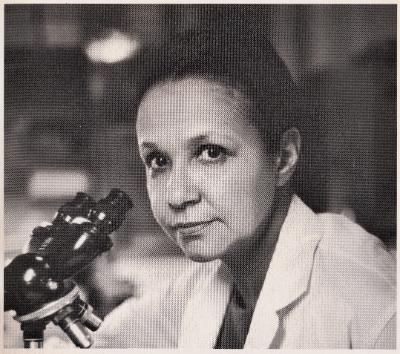
First African American woman to be named associate dean of a medical school
Born: November 30, 1919
Died: February 2013
Class of 1945, School of Medicine
Jane Cooke Wright, M.D. '45, was the first African American woman to be named associate dean of a nationally recognized medical institution in 1967, and at the time, she was the highest-ranking African American woman at a U.S. medical school. She earned her medical degree, with honors, from New York Medical College in 1945 after an accelerated three-year program.
She completed her residency at Harlem Hospital where she would later join her father, Dr. Louis Wright, at the Cancer Research Foundation at Harlem Hospital. Following Dr. Louis Wright's death in 1952, Dr. Wright was appointed head of the Cancer Research Foundation, at the age of 33.
In 1955, Dr. Wright became an associate professor of surgical research at New York University and director of Cancer Chemotherapy Research at New York University Medical Center and its affiliated Bellevue and University hospitals. Her work analyzed a wide range of anti-cancer agents, explored the relationship between patient and tissue culture response, and developed new techniques for administering cancer chemotherapy.
In 1964, President Lyndon B. Johnson appointed Dr. Wright to the President's Commission on Heart Disease, Cancer, and Stroke.
While pursuing private research at New York Medical College, she implemented a new comprehensive program to study stroke, heart disease, and cancer, and created another program to instruct doctors in chemotherapy. In 1971, Dr. Jane Wright became the first woman president of the New York Cancer Society. She was a founding member of the American Society of Clinical Oncology, (ASCO). Today, ASCO represents 40,000 oncology professionals and is the largest organization of its kind in the world.
Elisabeth D. Bing, PT, LCCE
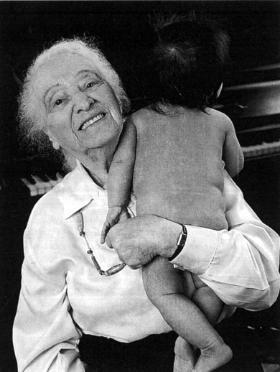
Natural childbirth pioneer and co-founder of Lamaze International
Born: 1914
Died: 2015
Elisabeth D. Bing, PT, LCCE, a German physical therapist and clinical assistant professor of obstetrics and gynecology at New York Medical College from 1974 to 1988, helped make natural childbirth a commonly-accepted practice in the United States. Most notably, in 1960 she and Margaret Karmel founded the revolutionary Lamaze/ASPO, the organization currently known as Lamaze International.
Composed of parents, childbirth educators, and professionals, Lamaze International was formed to spread the word about natural childbirth, and to set the standard for Lamaze childbirth educators. Bing became interested in childbirth techniques during the 1950s, when women were often fully anesthetized during childbirth – and fathers were often nowhere near the delivery room. She studied that the work of French obstetrician Fernand Lamaze, who was a proponent of techniques used by Russian women, including the use of relaxation, breathing and emotional support from a partner, in order to progress through labor pain without the use of medication. The organization taught breathing and relaxation techniques to generations of expectant mothers. Lamaze is now a household name.
Elisabeth Bing is the author of numerous books and articles on natural childbirth.
Bing made frequent television appearances to further awareness of natural childbirth. Her book, Six Practical Lessons for an Easier Childbirth (1967) remains in print today.
George Epps Cannon, M.D., Class of 1900, LL.D.
Civil rights leader in New Jersey.
Hometown: Carlisle, South Caroline
Born: 1869
Died: 1925
- Executive director, National Medical Association
- Leader of campaigns against segregation in the State of New Jersey
- Founder of the Frederick Douglass Film Company, one of the first Black-owned movie studios, 1916
- Chair of an 18 state anti-lynching delegation to President Warren G. Harding, 1923
George Epps Cannon, M.D., Class of 1900, was a physician and civil rights leader in New Jersey, where he was a prominent political activist and led local and national campaigns against lynching and segregation.
Dr. George Cannon was born in 1869 in Carlisle, South Carolina. Inspired by a prominent local pastor, the young Cannon resolved to attend Lincoln University, a historically Black university in Pennsylvania, where he paid his tuition by working as a Pullman car porter. He received his bachelor’s degree in 1893 and later received an honorary law degree from Lincoln in recognition of his civil rights activism. In 1896, he enrolled at New York Medical College (NYMC) under the preceptorship of his fellow Lincoln University and NYMC alumnus Albert Sidney Reed, M.D., Class of 1895. Dr. Cannon received his M.D. in 1900 and settled in Jersey City, New Jersey, where he established a thriving practice.
Dr. Cannon’s prominence as a physician soon made him a leader in New Jersey’s Black community, and he became active locally and nationally in the civil rights movement. In New Jersey, he chaired the Committee of One Hundred, a group of Black leaders who waged successful campaigns against segregation in local restaurants and against a racially targeted curfew law. Nationally, he was active in the campaign to pass a federal anti-lynching bill, and in 1923 he chaired a delegation of Black activists from 18 states to U.S. President Warren G. Harding in support of the bill. In 1924, the same year that his fellow NYMC alumnus Paul Augustus Collins, M.D., Class of 1913, attended the Democratic National Convention as its first Black delegate, Dr. Cannon was a delegate to the Republican National Convention, where he continued to advocate for an anti-lynching bill.
For many years Dr. Cannon served as executive director of the National Medical Association (NMA). In the years following World War I, he led the NMA’s campaigns against the segregation of the medical staff of the Tuskegee Veterans Administration hospital and for the appointment of Black physicians to positions of equal responsibility in the medical units of the U.S. military. In 1916, in response to the success of D.W. Griffith’s white supremacist propaganda film Birth of a Nation, Dr. Cannon founded the Frederick Douglass Film Company, one of the first Black owned movie studios, whose films highlighted Black achievement. The studio produced four full length films, including a courtroom drama and a documentary on Black soldiers in the World War I.
Dr. Cannon passed away in 1925. His funeral in Jersey City, New Jersey, attended by overflow crowds, included the reading of a condolence message from U.S. President Calvin Coolidge. According to historian Dr. Graham Hodges, whose book Black New Jersey: 1664 to the Present Day was published in 2019, Dr. Cannon was “the most important Black New Jerseyan of the first quarter of the twentieth century.”
As President of the Committee of One Hundred, an organization of Black leaders, Dr. Cannon led the movement against segregation in the State of New Jersey. These headlines are from the January 15, 1914, New York Age.
Paul Augustus Collins, M.D., Class of 1913
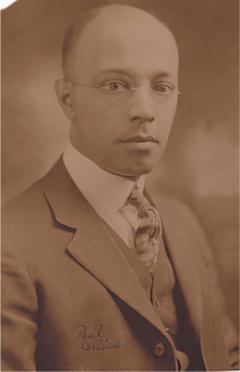
Political activist and first Black delegate to attend a Democratic National Convention
Hometown: Oakland, California
Born: 1885
Died: 1952
- First Black delegate to the Democratic National Convention, 1924
- Founding member of the Executive Council, Manhattan Central Medical Society, 1930
- First Black chair of the Department of Ophthalmology at Harlem Hospital after its desegregation
Paul Augustus Collins, M.D., Class of 1913, was an ophthalmologist and political activist who holds the distinction of being the first Black delegate to attend a Democratic National Convention. Dr. Collins was born in 1885 and raised in Oakland, California. In 1908, he received a bachelor’s degree from Lincoln University, a historically Black university in Pennsylvania. He attended New York Medical College (NYMC) under the mentorship of Eugene Percy Roberts, M.D., Class of 1894, and Albert Sidney Reed, M.D., Class of 1895, both of whom had been members of the Class of 1891 at Lincoln. Dr. Collins graduated from NYMC in 1913 and settled in Trenton, New Jersey, where he was a founding vice president of the Trenton branch of the Urban League.
After several years in Trenton, Dr. Collins moved to New York City and established a practice in Harlem. In 1925 he co-founded the Edgecombe Sanitarium, a private hospital established by and for Black physicians who were excluded from admitting privileges at other New York City hospitals. In 1927, he helped establish a free outpatient service for underserved neighborhood residents at the Bethel African Methodist Episcopal Church in Harlem, where he led the ophthalmology and otolaryngology clinics.
As a prominent physician and community leader in Harlem, Dr. Collins was politically active. He was a close associate of Harlem Democratic leader Ferdinand Q. Morton and was involved in efforts to increase voter turnout in the Harlem community. In the summer of 1924, Dr. Collins attended the Democratic National Convention in Madison Square Garden. His presence as the first Black delegate to attend the convention was widely reported. Dr. Collins remained an active participant in politics in Harlem for the remainder of his life, serving as a member of the New York County Democratic Committee and campaigning for Franklin D. Roosevelt in the 1932 presidential election. In 1929, Harlem’s New York Age newspaper reported that Adam Clayton Powell Jr., the college aged son of a prominent Harlem pastor, had been rushed to Dr. Collins for specialty treatment of a sinus infection. Fifteen years later, Reverend Powell Jr. became the first Black Congressman from New York State.
In 1930, Dr. Collins became a founding member of the executive board of the Manhattan Central Medical Society (MCMS), the Manhattan affiliate of the National Medical Association. That same year, due to the efforts of MCMS president Louis T. Wright, M.D., the medical staff of Harlem Hospital was desegregated, and Dr. Collins was subsequently named to the staff of the Department of Ophthalmology. A few years later, Dr. Collins became the first Black physician to chair the department, a position he held until his passing in 1952.
Dr. Collins’ attendance at the 1924 Democratic National Convention was widely reported on that summer. This caricature of Dr. Collins wearing a delegate’s sash was published in the Ithaca Journal on July 7, 1924.
Zbigniew Darzynkiewicz, M.D., Ph.D.
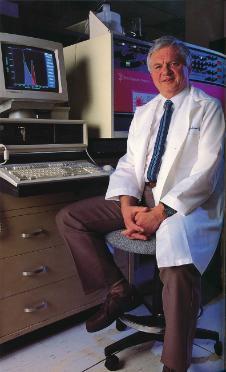
Established the flow cytometry and laser scanning core facilities and the founding director of the Brander Cancer Research Institute
Hometown: Poland
Born: 1936
Died: 2021
- Professor of Pathology, Microbiology and Immunology, and of Medicine, New York Medical College (NYMC)
- Founding Director, Brander Cancer Research Institute, NYMC
- Pioneering cytometry researcher and expert on the phases of the cell cycle and cell apoptosis
- Developer of the TUNEL, FLICA and SCSA assays
- President, International Society for the Advancement of Cytometry
Zbigniew Darzynkiewicz, M.D., Ph.D., professor of pathology, microbiology and immunology, and of medicine, was one of the pioneers of modern cytometry. As a faculty member at NYMC, Dr. Darzynkiewicz established the flow cytometry and laser scanning core facilities and was the founding director of the Brander Cancer Research Institute.
Dr. Darzynkiewicz was born in Poland in 1936. He received his M.D. degree from the Medical University of Warsaw in 1960 and his Ph.D. there in 1966. His early research focused on lymphocytes, and by 1968 Dr. Darzynkiewicz had been the first author of several papers published in Nature and Science. In that year during a period of political repression in the Eastern Bloc brought on by the Soviet invasion of Czechoslovakia he escaped to the West, arriving in Sweden as a political refugee. There Dr. Darzynkiewicz joined the laboratory of Nils R. Ringertz, M.D., Ph.D., a pioneering cell geneticist, at the Karolinska Institute. The following year he emigrated to the United States, where he worked with EndreBalazs, M.D., at the Boston Biomedical Research Institute.
In 1974, Dr. Darzynkiewicz joined the staff of the Sloan-Kettering Institute. His colleague at Sloan-Kettering, Myron Melamed, M.D., who would later chair the Department of Pathology at NYMC, introduced Dr. Darzynkiewicz to the flow cytometer, a newly developed instrument which allowed for the rapid computerized study of large quantities of cells. Flow cytometry became the focus of Dr. Darzynkiewicz’s research. In 1990, he was recruited to establish the Brander Cancer Research Institute at NYMC, bringing with him a staff of dedicated colleagues and several major grants. He spent the rest of his career at NYMC.
Using flow cytometry to investigate the phases of the cell cycle, Dr. Darzynkiewicz made fundamental contributions to cell science. The methods he developed are now used by researchers worldwide. He distinguished previously unknown stages in cell growth and pioneered the study of apoptosis (cell death). One paper on this subject, “Features of apoptotic cells measured by flow cytometry,” remains the most highly cited paper ever published in the journal Cytometry. Dr. Darzynkiewicz developed the TUNEL and FLICA assays, widely adopted methods for detecting DNA fragmentation and techniques for laser scanning cytometry, which combined flow and still image cytometry allowing for simultaneous study of living and dead cells.
These discoveries in basic science had immediate clinical relevance to the treatment of cancer. With a detailed understanding of the phases of cell growth, drugs could be developed to intervene and halt tumor growth during targeted phases of the cell cycle. His methods for studying cell apoptosis have also been applied to fertility medicine as the basis of the SCSA assay, a tool for detecting male infertility caused by alterations in chromatin structure in the sperm cell.
Dr. Darzynkiewicz's research was internationally recognized and earned him many honors, including the Dean’s Distinguished Research Award at NYMC in 2003, the first Fulwyler Award for Innovative Excellence at the International Society for Analytical Cytology (ISAC) XXIII International Congress in 2006, as well as the 2012 Distinguished Scientist of Westchester award by the New York Section of the American Chemical Society in 2012. He garnered international media attention for his contributions to a 2010 study that used laser scanning cytometry to show that smoke from cigarettes made without tobacco or nicotine causes as much DNA damage as tobacco products.
Dr. Darzynkiewicz was the author of 780 papers, 15 books and holder of eight U.S. patents. Over the course of his career, he delivered more than 380 invited lectures. Dr. Darzynkiewicz is remembered by his many collaborators and former students as a generous teacher and mentor whose interests ranged widely and who believed in the importance of passing scientific knowledge to new generations of researchers and clinicians. He passed away in 2021 leaving a legacy of permanent contributions to cell science as a researcher, teacher and mentor.
Henry Oswi Harding, M.D., Class of 1913
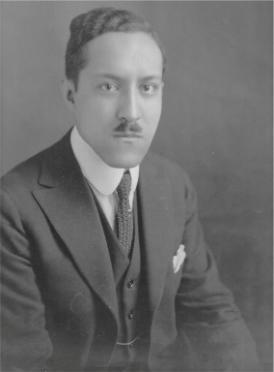
First Black physician to hold a staff position at Mount Sinai Hospital
Hometown: New York City
Born: 1886
Died: 1958
- Lifelong public health leader and advocate for the well-being of the Harlem community
- Chair, Harlem Tuberculosis and Health Committee
- First Black physician to hold a staff position at Mount Sinai Hospital
- Candidate for the New York City Board of Aldermen, 1923
- Founder, Alpha Physical Culture Club
Henry Oswi Harding, M.D., Class of 1913, the son of Guyanese immigrants, grew up in New York City and enrolled in New York Medical College (NYMC) under the mentorship of Eugene Percy Roberts, M.D., Class of 1894. As a student, Dr. Harding was an accomplished musician, playing first violin in the college orchestra and opening the 1913 Class Day exercises with a solo performance.
Dr. Harding’s interest in public health began early on. During his fourth year at NYMC, he was named secretary of the Committee for Improving Industrial Conditions of the New York Urban League - the beginning of a lifelong career in the service of public health. After graduating, Dr. Harding settled on Seventh Avenue in Harlem, where he established a private general practice and became involved in civic life.
In 1924 he became chair of the Harlem Tuberculosis Committee, a local branch of the New York Tuberculosis Association. The following year, recognizing that fighting tuberculosis in Harlem would require addressing the broader health and sanitary needs of the community, Dr. Harding led the Committee’s expansion to a general public health organization, the Harlem Tuberculosis and Health Committee. He served as its chair for the next five years before passing the position on to his classmate Peyton Anderson, M.D., Class of 1913.
During Dr. Harding’s tenure, the Committee sponsored a children’s health and dental clinic, information services and lectures, devoting special attention to the needs of newly arrived migrants. He also encouraged his patients to pursue physical fitness; himself a competitive sprinter, Dr. Harding was a founding member of the Alpha Physical Culture Club, a community run gymnasium credited by sports historians with introducing basketball to Harlem.
From 1921 to 1927, he served as a staff member in the outpatient genitourinary clinic of Mount Sinai Hospital, where he was the first Black physician on staff.
In 1923 he ran as a reform candidate for the New York City Board of Aldermen in the 21st District. His platform included the desegregation of Harlem Hospital and the establishment of a children’s health clinic in Harlem. While Dr. Harding lost his election to the Tammany Hall backed incumbent, he remained involved in politics. In 1938 he was among the founding members of the Coalition Congressional Committee, a group of Harlem civic leaders who organized to elect a Black representative from Harlem to the U.S. Congress. Their efforts bore fruit in 1945, when Adam Clayton Powell Jr. became the first Black Congressman from New York State.
Dr. Harding’s role as a tuberculosis advocate led him to be appointed to the board of directors of the New York Tuberculosis Association. He delivered citywide public radio lectures on tuberculosis care as a speaker on WNYC, and in 943 he was appointed by New York Governor Thomas E. Dewey to the board of directors of the State Tuberculosis Hospital at Ray Brook in the Adirondack Mountains.
Rachmiel Levine, M.D.
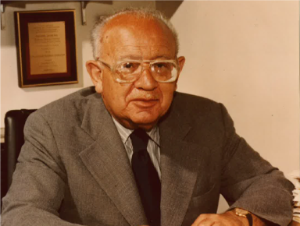
Pioneering physician and researcher, considered the father of modern-day diabetes research for this discovery of how insulin works in the human body.
Hometown: Eastern Poland
Born: 1910
Died: 1998
Former professor and chair of the Department of Medicine in the School of Medicine at New York Medical College, Rachmiel Levine, M.D., was the father of modern-day diabetes research. Born in Eastern Poland, he fled his native country at the age of 16, after his father was killed in an anti-Jewish riot in the Ukraine. He migrated to Canada where he was adopted by a physician and later earned his bachelor’s degree in 1932 and medical degree in 1936 from McGill University in Montreal.
Dr. Levine relocated to the United States, where he completed his medical residency at Michael Reese Hospital, Chicago, Illinois, and went on to serve as director of the Department of Metabolism, chair of the Department of Medicine and director of medical education from 1942 to 1960. It was during this time that Dr. Levine’s ground-breaking research emerged from his quest to answer: “What is chemically wrong in the tissue of a patient with diabetes and how does insulin correct it?”
Based on research conducted in his lab at Michael Reese Hospital, Dr. Levine published The Effects of Blood-Sugar Level on Glucose Utilization, a study which theorized that the greater the amount of glucose present in the blood, the greater the amount that is used by the body. Next, he penned, Carbohydrate Metabolism, the book that ultimately created the framework for all future diabetes studies.
In 1946, Dr. Levine became the first scientist to discover the role of insulin in glucose metabolism. This was a direct contradiction to the conventional medical knowledge of the time, which assumed that glucose molecules freely passed through the cell membrane. In contrast, Levine's theory (which has subsequently been coined the "Levine Effect") suggests that insulin serves as the key regulatory factor for the transport of glucose into the cells. Levine theorized that insulin stimulates the transport of glucose from the blood to fat/muscle cells, thus lowering one’s blood glucose level.
In 1960, Dr. Levine joined the team at New York Medical College, where he served as professor and chair of the Department of Medicine from 1960 to1971. In 1961, Dr. Levine received the Banting Medal for Scientific Achievement Award, the highest award of the American Diabetes Association (ADA). He was a member of the National Academy of Sciences and served as president of the ADA and the International Diabetes Foundation. In 1971, he moved to Duarte, California, to serve as the executive medical director at City of Hope Medical Center where initiated the diabetes program.
In the late 1970s, Dr. Levine encouraged two scientists to genetically engineer bacteria to produce human insulin. This research led to the development of Humulin®, a new preparation of insulin, which is used by millions of people worldwide. Over the course of his career and his persistent research, Dr. Rachmiel Levine made key discoveries that have helped our understanding and treatment of diabetes. For this, and his many contributions in the area of diabetes research, Dr. Levine is remembered as the father of modern-day diabetes research.
Lois C. Lillick, Ph.D., M.D. '53, M.P.H.
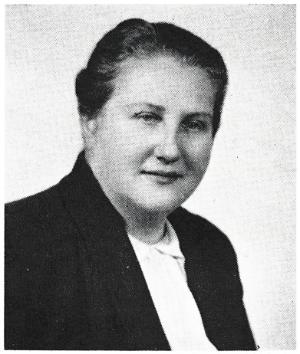
Only person to receive an M.D. from New York Medical College while already chairing one of its basic science departments
Hometown: Cincinnati, Ohio
Born: 1913
Died: 1976
- Chair of the Department of Microbiology, 1946-1962
- Only person to receive an M.D. from New York Medical College while already chairing one of its basic science departments
- Conducted foundational research in phytoplankton ecology at the Woods Hole Oceanographic Institute
- Leader in Medicare advocacy and home care services at the California Department of Public Health
Lois C. Lillick, Ph.D., M.D. ’53, M.P.H., who chaired the Department of Microbiology from 1946 to 1962, holds the unique distinction of being the only physician ever to receive an M.D. from New York Medical College (NYMC) while chairing one of its basic science departments. Her legacy includes significant accomplishments in the basic sciences, medicine and public health.
A native of Cincinnati, Dr. Lillick received a Ph.D. in microbiology from the University of Michigan in 1938, completing her doctoral dissertation, The Microplankton of the Gulf of Maine. As a postdoctoral researcher at Harvard University and the Woods Hole Oceanographic Institution, she studied the ecology of Atlantic phytoplankton. This work is now recognized as being foundational to the discipline of oceanographic ecosystem modeling.
As Dr. Lillick later recalled, however, Harvard in the 1930s was “no place for an ambitious female.” She left Massachusetts for New York City in 1940 and joined the NYMC faculty as an instructor in what was then known as the Department of Bacteriology. In this new environment her focus shifted from field ecology to laboratory biology, and she began publishing research on the mass culture of unicellular organisms. In 1945, Dr. Lillick was named assistant professor of bacteriology.
The following year, with the departure of the previous department chair, Dr. Lillick was named an associate professor and became acting chair of the department. Her tenure as acting chair lasted for seven years. It appears that her doctoral background, in ecology rather than the health sciences, led to hesitation regarding her permanent appointment to the chair. So, while continuing to teach, Dr. Lillick enrolled in the M.D. program at NYMC. She graduated first in her class in 1953. That summer, she became a full professor and chair of the Department of Bacteriology, which was renamed the Department of Microbiology in 1956.
During Dr. Lillick’s tenure, the Department of Microbiology was frequently involved in translational collaboration with the clinical departments. In collaboration with faculty from the Department of Medicine, she co-authored the first major study of cycloserine, an early antibiotic. Her own research interests, meanwhile, shifted to immunology.
Dr. Lillick left the faculty at the end of the 1961-1962 academic year to take a position at the University of California, Berkeley. During that spring’s NYMC Alumni Day celebrations, Dr. Lillick carried the College Mace. This honor was typically given only to retiring faculty, but as the Chironian reported, “an exception had been made in view of the high esteem of faculty and students for Dr. Lillick.”
Dr. Lillick’s career and achievements progressed in medicine and the basic sciences. Her clinical experience as a consulting physician at NYMC’s affiliate hospitals inspired an interest in public health as the front line of disease prevention in underserved communities. While at Berkeley, Dr. Lillick received a Master of Public Health (M.P.H.). Soon she was on the staff of the California Department of Public Health, and by 1973 she had risen to become deputy director of the Department.
Dr. Lillick discovered a new interest and area of expertise. She recognized the need for home health care as a critical component of public health for the aged and vulnerable and fought for the inclusion of home care services in Medicare and Medicaid coverage. After her passing in 1976, the California Association for Health Services at Home established the Lois Lillick Award for outstanding leadership in home care advocacy.
Dr. Lillick remembered with pride the many students she taught at NYMC. She was proud of the school and the quality of its medicine.
George Nagamatsu, M.D. '34, FACS
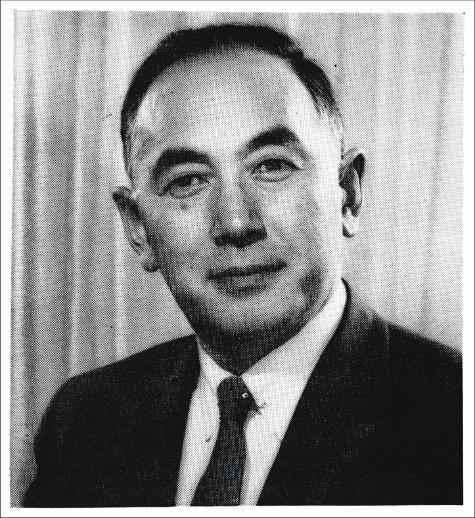
First Nisei (a United States citizen born to Japanese immigrant parents) to chair a department at a medical school in the United States
Hometown: Washington State
Born: 1904
Died: 2001
- Chair, Department of Urology, 1957-1972; Acting Chair, 1979-1980
- First Nisei (American citizen born to Japanese immigrant parents) to chair a department in academic medicine in the United States
- Founder, Engineering and Urology Society
- Founding President, Japanese Medical Society of America
- Developed the Nagamatsu Dorsolumbar Flap Incision
George Nagamatsu, M.D. ’34, FACS, longtime chair of the Department of Urology at New York Medical College (NYMC), holds the distinction of being the first Nisei, a United States citizen born to Japanese immigrant parents, to chair a department at a medical school in the United States.
Dr. Nagamatsu was born and raised in Washington State. He received a B.S. in electrical engineering from the University of Washington but was barred from finding employment as an engineer in Seattle because of racial prejudice. He moved to New York City in 1928 and worked in sales before turning to medicine.
As an electrical engineer, Dr. Nagamatsu lacked the necessary undergraduate prerequisites for admission to medical school, but NYMC was willing to accept him as a student with the condition he complete his undergraduate pre-medical studies at the same time as his first-year M.D. coursework. He successfully completed this requirement and graduated as a member of the Class of 1934. In 1937, as NYMC prepared to move from the Flower Hospital to a new location on Fifth Avenue, Dr. Nagamatsu joined the faculty of his alma mater as an instructor in the Department of Urology.
Interviewed by the Chironian in 1980, Dr. Nagamatsu recalled his feelings on December 7, 1941, the day of the attack on Pearl Harbor as “almost unbearable.” Anxious over whether he would lose the trust of his colleagues and patients, he wondered whether he should report as usual for hospital rounds. He continued to serve as a faculty member throughout the war and saw patients in the private practice of Sprague Carleton, M.D., then the head of the Department of Urology. Dr. Nagamatsu volunteered for service in the U.S. Army Medical Corps but was turned down. Instead, he served the war effort as an attending surgeon at the Manhattan VA Hospital.
Following the Second World War, the departments at NYMC were expanded and reorganized on a modern, full-time specialty basis. Dr. Nagamatsu rose through the ranks of the Department of Urology, becoming assistant professor in 1947 and associate professor in 1950.
Dr. Nagamatsu brought his training as an engineer to the practice of urological surgery and developed several widely used instruments, including a fiber optic nephroscope and an electronic prostatometer. He was the founding chairman of the American Urological Society’s Biomedical Engineering Committee and the founding president of the Engineering and Urology Society. In 1948 he introduced the eponymous surgical technique called the Nagamatsu dorsolumbar flap incision.
In 1957, Dr. Nagamatsu became chair of the Department of Urology at NYMC. He led the department for 15 years, overseeing the creation of its residency program and the expansion of its full-time faculty. He stepped down from the chairmanship in 1972 to focus on research and continued for two more decades as a research professor in the Department, serving briefly as acting chair in 1979-1980. In 1979, Dr. Nagamatsu was awarded the NYMC Distinguished Service Medal.
Sophie Rabinoff, M.D., M.P.H.
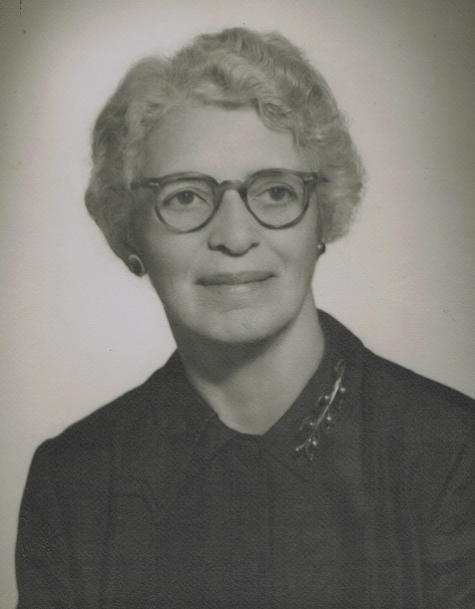
First female house staff member in Beth Israel Hospital and first female physician in American Zionist Medical Unit in Palestine
Hometown: Mogilev, Russia
Born: 1889
Died: 1957
- Chair, Department of Preventive Medicine, Public Health and Industrial Hygiene, 1951-1956 (predecessor of the current Department of Family and Community Medicine)
- New York City public health leader and childhood nutrition advocate
- First female house staff member, Beth Isreal Hospital, Manhattan
- Only female physician, American Zionist Medical Unit in Palestine, 1918-1919
Sophie Rabinoff, M.D., M.P.H., was a public health leader and pioneer in medicine who devoted her career to bringing effective maternity and pediatric care to underserved communities in New York City. Born in 1889 to a Jewish family in Mogilev, Russia, Dr. Rabinoff was an infant when her family emigrated to the United States. After attending New York City public schools and Hunter College, she received her M.D. degree in 1913 from the Women’s Medical College of Pennsylvania. When she applied for an internship at Manhattan’s Beth Israel Hospital, she was initially turned down because of her sex, but the hospital administration eventually agreed to let her take the competitive admissions examination. Earning the top score out of thirty-one applicants, Dr. Rabinoff joined the Beth Israel house staff as its first female member.
She followed her internship with a residency in pediatrics at the New York Home for Infants, where she studied the effect of childhood nutritional deficiencies. In 1918, Dr. Rabinoff was recruited by Hadassah founder Henrietta Szold to serve in the American Zionist Medical Unit in Palestine, where she was the only female physician. While there, she organized the region’s first pediatric clinic, where children of all backgrounds could receive effective medical care.
Upon returning to New York, Dr. Rabinoff joined the New York City Department of Health, where she continued to study childhood nutrition and promote its importance as a public health issue. In 1938, she became the public health officer responsible for East Harlem, and in 1939 she joined the faculty of New York Medical College. As a voluntary instructor, she taught public health courses while continuing to serve at the Department of Health, where her responsibilities eventually came to include a large portion of the Bronx in addition to Harlem. Dr. Rabinoff received her M.P.H. from Columbia University in 1944, and in 1951 she became a full professor at New York Medical College as chair of the Department of Preventive Medicine, Public Health and Industrial Hygiene, a predecessor of today’s Department of Family and Community Medicine. She led the department until her retirement in 1956 and passed away at Flower-Fifth Avenue Hospital the following year.
Eugene Percy Roberts, M.D., Class of 1894
First Black member of the New York City Board of Education
Hometown: Lewisburg, North Carolina
Born: 1868
Died: 1953
- Known as "the dean of Harlem physicians" for nearly sixty years of service as a medical and civic leader
- First Black member of the New York City Board of Education, 1917
- Mentor to a generation of Black physicians at New York Medical College
Eugene Percy Roberts, M.D., Class of 1894, was one of the leading Black physicians in New York City for more than half a century. Prominent in civic life as well as medicine, Dr. Roberts was an active figure in politics and culture during the Harlem Renaissance. At New York Medical College (NYMC), he was a mentor to a generation of Black physicians, many of whom went on to hold important medical and civic leadership roles.
Dr. Roberts was born in 1868 in Lewisburg, North Carolina, to parents who had been enslaved prior to emancipation. He received his bachelor’s degree in 1891 from Lincoln University, a historically Black college in Pennsylvania. In 1894, he received his M.D. from NYMC and established a practice in New York City. He was among the early members of the National Medical Association, established in 1895, and served as its New York State vice president.
At the time, most New York City medical schools did not admit Black students, but in the two decades following Dr. Roberts’ graduation in 1894, nearly 20 Black students received their M.D. degrees from NYMC. Like Dr. Roberts, these students were mostly graduates of Lincoln University and went on to practice in the New York metropolitan area. Dr. Roberts was the heart of this connection. Medical education at the turn of the century included a period of study with a “preceptor,” an established physician to sponsor the student, vouch for their potential during their admission to medical school, and allow them to shadow their private practice. Dr. Roberts often served as preceptor for these students.
Dr. Roberts’ mentees included members of his own extended family, with whom he shared a home and eventually an office in Harlem. His younger brother-in-law Arthur Logan, M.D., went on to become a prominent Harlem surgeon and was the personal physician to noted American composer Duke Ellington. In 1929, Dr. Roberts’ sister in
law Myra Adele Logan, M.D., Class of 1933, was the first recipient of NYMC’s Walter Gray Crump Scholarship, the first scholarship for Black medical students at a white majority medical school. Dr. Logan would go on to become the second Black woman to be elected to the American College of Surgeons and the first woman of any background to perform open heart surgery.
In addition to his medical prominence, Dr. Roberts was a political and civic leader in the Harlem community. He was a co-founder of St. James Presbyterian Church, a major Black
church in Harlem. In 1898, he was co-founder of the first Black run Democratic Party organization in New York City, and in 1911, he helped establish the National Urban League. In 1917, Dr. Roberts was appointed by Mayor John Purroy Mitchel to the New York City Board of Education, becoming its first Black member. His wife Ruth Logan Roberts was a prominent suffrage and civil rights activist, and the family were friends and patrons of many artists and writers during the Harlem Renaissance of the 1920s.
In 1952, Harlem’s New York Age newspaper ran an 84th birthday profile of Dr. Roberts. By then, he was the oldest practicing physician in Harlem, described by the Age as “the dean of Harlem physicians” in recognition of his more than fifty years of service to the community. He died the following spring. His obituary noted that throughout his career in medicine, the Black community in New York City had grown from 18,000 people to three quarters of a million. Some of these had been patients of Dr. Roberts. Many more had been the patients of his students.
Mary B. Stark, Ph.D.
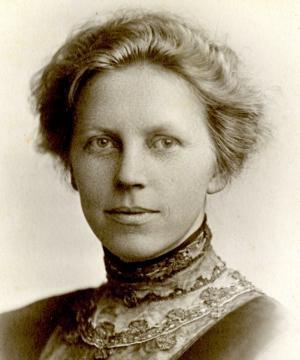
First female department chair at New York Medical College
Hometown: Minnesota
Born: 1878
Died: 1967
- Pioneering Drosophila oncology researcher
- Founding chair, Department of Histology and Embryology, 1926-1941 (later part of the Department of Anatomy)
- First female department chair at New York Medical College
Mary B. Stark, Ph.D., who founded and led the Department of Histology and Embryology, was the first woman to chair a department at New York Medical College (NYMC).
A native of Minnesota, Dr. Stark received a bachelor’s and master’s degree in biology from Hamline University in Minneapolis. In 1908, she joined the faculty of St. Olaf College as professor of biology and soon became head of the department. The circumstances of her “honorable dismissal” from St. Olaf in 1912 remain unclear; the school’s centennial history, published in 1974, reports that the trustees may have been uncomfortable with a female department chair or may have objected to her teaching Darwinian evolution. In 1955, St. Olaf made amends to their distinguished former faculty member by awarding her an honorary doctorate.
After leaving St. Olaf’s, Stark enrolled in the Ph.D. program in zoology at Columbia University. She studied under Nobel Laureate Thomas Hunt Morgan, Ph.D., in his famous “fly room,” the laboratory which first established Drosophila as a model organism. In a groundbreaking 1918 paper, she was the first to identify and document the presence of fatal metastatic tumors in Drosophila. Building on Dr. Morgan’s work in applying Mendelian genetics to Drosophila, she demonstrated that susceptibility to these tumors could be shown to be inherited.
While studying at Columbia, Dr. Stark served as an instructor at the New York Medical College and Hospital for Women, which merged with NYMC in 1918. She remained on the faculty following the merger, and upon the completion of her Ph.D. in 1919, she was named professor of histology and embryology in the Department of Anatomy. In 1926, the year she was the recipient of a major grant from the National Academy of Sciences, histology and embryology became a separate full department under Dr. Stark’s leadership.
As NYMC shed the last vestiges of its nineteenth century homeopathic curriculum, Dr. Stark established her department on forward-looking scientific grounds, recruiting and supervising a staff of instructors and researchers and assembling an extensive slide library for the teaching of microscopy. Throughout her tenure as chair, she kept up a prodigious research output in addition to her teaching and administrative responsibilities. Dr. Stark’s nephew later recalled that she sometimes brought a microscope and a bottle of live flies with her on family vacations so that she could continue her research.
Dr. Stark stepped down as chair in 1941 and the Department of Histology and Embryology was merged back into the Department of Anatomy. In retirement in California, she continued to conduct research in the laboratory of the Veterans Administration hospital in Long Beach despite her advancing blindness. In the 21st century, as researchers equipped with modern genomic tools have renewed the use of Drosophila to study oncogenesis, Dr. Stark is recognized as a pioneer.
Clemence Sophia Harned Lozier, M.D.
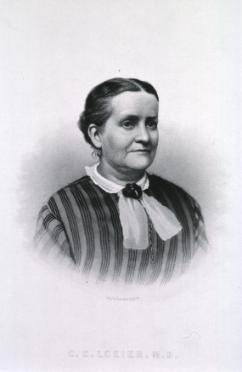
Foundress and dean, New York Medical College and Hospital for Women
Hometown: Plainfield, New Jersey
Born: December 11, 1813
Died: April 26, 1888
Clemence Sophia Harned Lozier, M.D., practiced medicine in New York specializing in obstetrics and surgery. As New York state barred women as physicians in hospitals, in 1863 Dr. Lozier opened a medical school exclusively for female students, the New York Medical College for Women, which was staffed and supervised by the College’s male faculty.
In 1860, prior to opening the school, Lozier began a series of lectures from her home on anatomy, physiology, and hygiene as these topics were regularly neglected in women’s education. Seeing high demand for the lectures and tired of seeing qualified women get turned away from medical school, Dr. Lozier, with the help of Elizabeth Cady Stanton, was able to persuade the New York State legislature to grant her a charter for a women’s medical college. In 1863, the New York Medical College for Women opened with seven female students in the inaugural class, and a faculty of eight doctors, four men and four women.
Over the next twenty-five years, the school grew and placed more than 200 female graduates in medical practice throughout the U.S. and abroad. The school’s hospital was the first place in New York where women could be treated by doctors of their own gender, and its clinic attracted up to 2,000 female patients each year.
Dr. Lozier gave the commencement address at the medical school’s 25th graduation ceremony in 1888 and passed away two days later at the age of 74.
In 1917, a year before the U.S. national amendment, New York state grants women suffrage. The following year, in 1918, for the first time, women graduate physicians are accepted in New York City municipal hospitals as interns. Later that same year, the College's Board of Trustees, in accord with the board president of the New York Medical College for Women, deems it feasible to close the women’s college and transfer the women students to the College at large (then, known as "New York Homeopathic Medical College and Flower Hospital"). Thus, making the College fully co-educational.
Eugene H. Porter, M.D., Class of 1885
New York Stat's Second Commissioner of Health from 1905 to 1914.
Hometown: Ghent, New York
Born: August 7, 1856
Died: August 11, 1929
Eugene Hoffman Porter, M.D. Class of 1885, was a prominent American physician, public health official, and agricultural leader. Born in Ghent, New York, Dr. Porter studied at Cornell University and graduated valedictorian from the NYMC in 1885. While a student at NYMC, he joined a group of senior medical students who organized a committee to raise funds and collect book donations to establish a permanent reference library at the College. He was an influential editor, academic, and leader in homeopathic medicine, serving as chair of chemistry and later professor of physiological materia medica at the College. He held key roles in several medical institutions and organizations, including the American Institute of Homeopathy, the New York State Homeopathic Medical Society, the Laura Franklin Free Hospital for Children, and the Hahnemann Hospital.
In 1905, Governor Frank W. Higgins appointed him Commissioner of the New York State Department of Health, a position he held until 1914. During his tenure, he advanced public health education, combated tuberculosis, and oversaw the creation of the State Public Health Council and county tuberculosis hospitals. He also advocated for the humane treatment of disease carriers, including recommending the release of Mary Mallon ("Typhoid Mary").
During retirement, Dr. Porter focused on farming in Upper Lislie, becoming active in the Dairymen’s League and other agricultural organizations. He later served as Commissioner of Foods and Markets (1917–1923).
Dr. Porter was affiliated with numerous scientific, public health, and agricultural societies. He also served on the Hudson–Fulton Commission and held local educational and civic leadership roles. He married Alice A. Day and had one son. Dr. Porter died at his home in 1929 and was buried in Upper Lislie Cemetery in Triangle, New York.
Francisco Felix Mendoza, M.D. Class of 1876
First Hispanic Graduate and Cuban Consul
Hometown: Cuba
Francisco Félix Mendoza, M.D. Class of 1876, a native of Cuba, became the first Hispanic graduate of New York Medical College in 1876. A skilled physician and devoted revolutionary, Dr. Mendoza returned to Havana after graduation to begin his medical practice while also becoming deeply involved in the movement for Cuban independence from Spain. His commitment to both healing and integrity converged in 1902 when, following Cuba’s independence, he was appointed to one of the first consular positions of the Republic of Cuba, stationed in Tampa, Florida. There, he continued to serve both his homeland and his new community as a practicing physician. His legacy as a healer, patriot, and international pioneer remains embedded in NYMC’s history and is an enduring example of how medicine can be a powerful force for change.
Adolfo Varona, M.D.
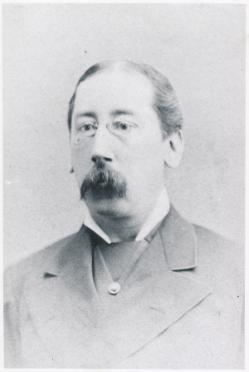
First Hispanic Faculty Member
Hometown: Cuba
In the 1870s, Professor Adolfo Varona, M.D., a Cuban-born physician, became the first known Hispanic faculty member at New York Medical College, where he taught histology. Dr. Varona was not only a respected medical educator but also an ardent supporter of the Cuban independence movement. His dual commitment to medicine and political reform positioned him as a vital figure in both academic and civic life, bridging the healing sciences with the pursuit of national freedom. An 1888 obituary commemorates his contributions and affirms his enduring legacy as a pioneer whose influence extended well beyond the classroom.
Gilbert Ortiz, M.D. '60
Champion of Advocacy in Medicine and Public Health
Hometown: New York City
A proud Puerto Rican and Bronx native, Gilbert Ortiz, M.D. ’60, assistant clinical professor of obstetrics and gynecology, was a trailblazer in medicine, medical education, and public service. A product of New York City’s public schools, Dr. Ortiz earned his B.S. in Pharmacy from Fordham University and went on to receive his M.D. from New York Medical College in 1960. He began his clinical career in obstetrics and gynecology at Metropolitan Hospital Center, where he completed his residency and remained a dedicated member of the medical staff.
Dr. Ortiz returned to his alma mater as a faculty member and quickly distinguished himself as a leader in academic medicine. In 1973, he became NYMC’s first associate dean for minority affairs, a groundbreaking appointment that reflected his lifelong commitment to access and quality in medical education and health care. That same year, he was named vice president for affiliations at both Metropolitan Hospital Center and Bird S. Coler Hospital, two of the College’s key clinical affiliates.
Deeply committed to supporting young people from varying backgrounds, Dr. Ortiz was instrumental in the founding of Aspira of America, a national organization focused on educational advancement and leadership development for Puerto Rican youth. As chair of the board of Aspira, he helped countless students pursue higher education. He also served as a founding medical advisor to the Boricua Health Organization, the predecessor to the Latino Medical Student Association (LMSA), which continues to advocate for Latin students in medicine nationwide.
In 1974, Dr. Ortiz took on a citywide leadership role as senior vice president for professional services at NYC Health + Hospitals, helping steer New York City’s public health system through the fiscal challenges of the 1970s. Though considered for the position of health commissioner for the City of New York in 1981, he later transitioned to private practice in the rural Midwest, before eventually retiring in Florida.
Dr. Ortiz’s enduring legacy lies in his unwavering dedication to mentorship, advocacy, and expanding access to quality care and education for all. His impact is felt across generations of students, physicians, and community leaders who continue to benefit from the pathways he helped forge.
Salvador Felix Sola, M.D. '43
Pioneer of Home Health Care
Hometown: Puerto Rico and New York City
Died: 1978
Salvador Felix Sola, M.D. ’43, holds the distinction of being the first known Puerto Rican graduate of the College. Born in Puerto Rico and raised in New York City, Dr. Sola completed his internship and residency at Metropolitan Hospital and served on staff at Lincoln Hospital. He was a specialist in geriatric and chronic care, eventually becoming medical director of the long-term care facility at Bergen Pines County Hospital in New Jersey before his passing in 1978. Press coverage from that time noted his earlier work with the NYC Department of Hospitals, where he reportedly helped organize one of New York City’s first home care services in the 1950s, a groundbreaking initiative in community health still being researched today.
Emiglio Esguerra, D.D.S., M.D., Class of 1910
Colombian Dual-Degree Physician
Hometown: Colombia
A graduate of Universidad Nacional de Colombia (National University of Colombia) with a degree in dentistry, Emiglio Esguerra, D.D.S., M.D. Class of 1910, came to New York Medical College and earned his M.D. in 1910. While little else is currently known about his career, his enrollment marks NYMC’s earliest known graduate from Colombia, a testament to the College’s international reach as early as the turn of the 20th century.
Fernando Aguilar, M.D., Class of 1917
First Mexican Graduate
Hometown: Veracruz, Mexico
Hailing from Veracruz, Fernando Aguilar, M.D. Class of 1917, was the first Mexican student known to earn a degree from NYMC. Though details of his life and career are scarce, a surviving class photo places him firmly in the history of the institution’s growing international population in the early 1900s.
Francisco Leao, M.D. Class of 1901
Brazilian Physician and Diplomat
Hometown: Brazil
Francisco Leão, M.D. Class of 1901, holds the distinction of being the first Brazilian graduate of the College. A dual servant in medicine and diplomacy, Dr. Leao practiced in New York City while also serving in the Brazilian diplomatic corps. His presence is immortalized in a class photo that still hangs in Alumni House and is noted in the College’s centennial history book.
Carmen and Marisa Castro, Class of 1949
A Trailblazing Family of Physicians
Hometown: San Juan, Puerto Rico
Among the most compelling stories from the College’s Class of 1949 is that of the Castro sisters—a remarkable Puerto Rican family from Hato Rey, San Juan, whose dedication to medicine spanned generations and institutions. On June 8, 1949, sisters Carmen Castro Suárez, M.D. ’49, and Marisa Castro, M.D. ’49, graduated together from NYMC, marking a historic milestone not only for their family but for Latin representation in medicine.
Carmen and Marisa were not the first physicians in their family. Their older sisters, Drs. Celeste and Providencia Castro, had previously earned their medical degrees from the Women’s Medical College of Philadelphia, becoming early trailblazers. At the College’s 1949 commencement, the four sisters reunited in celebration. An extraordinary family achievement made even more poignant by their shared origins as the daughters of a Puerto Rican farmer, Enrique Castro.
Both Drs. Carmen and Marisa Castro interned in Puerto Rico following graduation: Dr. Marisa at Arecibo District Hospital and Dr. Carmen at Municipal City Hospital in San Juan alongside her husband and fellow College alumnus José F. Suárez, M.D. ’49. Throughout their careers, the Castro sisters remained committed to public service and community care.
Today, that legacy endures. Dr. Marisa’s grandson is now a professor of medicine at the University of New Mexico, continuing the family tradition of excellence in health care and education. The Castro family's journey from the farmlands of Puerto Rico to the halls of NYMC and beyond stands as a testament to perseverance, intellect, and the transformative power of education.

